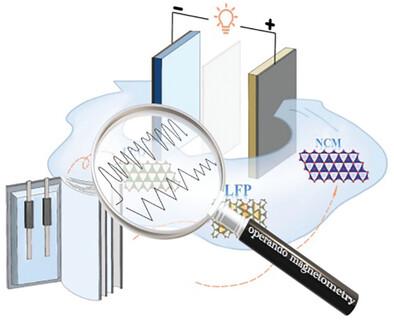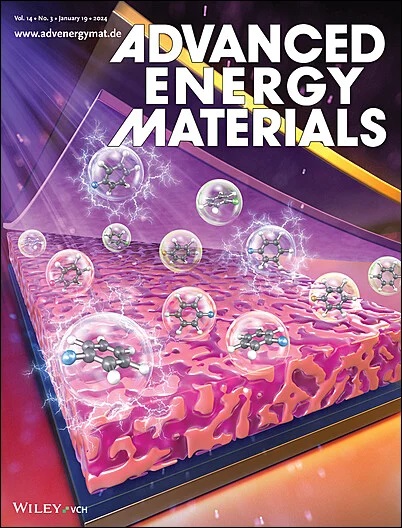From Spent Lithium-Ion Batteries to High-Performance Supercapacitors: Enabling Universal Gradient Recycling via Spin Capacitance
IF 24.4
1区 材料科学
Q1 CHEMISTRY, PHYSICAL
引用次数: 0
Abstract
Driven by environmental imperatives and the growing economic challenges posed by the accumulation of spent batteries, developing effective recycling strategies has become paramount. Current direct battery recycling methodologies primarily focus on structural restoration, but the universality of this approach is hampered by the variability in electrode degradation mechanisms and the extent of irreversible damage sustained after cycling. To overcome these inherent limitations, this research introduces a universally applicable in situ recycling strategy that rejuvenates the metal components within batteries. Through an in situ facile electrochemical treatment, the cathode material is engineered to create a nanostructured interface composed of transition metal/lithium compounds, enhancing intrinsic electron/ion conduction and enabling substantial charge storage with accelerated transfer capabilities. Furthermore, operando magnetometry reveals that the energy storage mechanism aligns with a space charge mechanism, manifesting as spin-polarized capacitance. As proof of concept, the recycled LiFePO4-based batteries are in situ converted into high-performance supercapacitors, boasting an energy density of 106 Wh kg−1 and a power density of 10,714 W kg−1, alongside impressive cycling stability with 91.3% capacitance retention after 2000 cycles. This approach demonstrates feasibility with LiFePO4 and extends to other commercial cathodes such as LiCoO2, LiNi1/3Co1/3Mn1/3O2, and even their blends, offering a groundbreaking solution for lithium-ion battery recycling.

从废锂离子电池到高性能超级电容器:通过自旋电容实现通用梯度回收
在环保要求和废旧电池积累带来的日益严峻的经济挑战的推动下,制定有效的回收策略变得至关重要。目前的电池直接回收方法主要集中在结构修复上,但这种方法的普遍性受到电极降解机制的可变性和循环后持续的不可逆损伤程度的阻碍。为了克服这些固有的限制,本研究引入了一种普遍适用的原位回收策略,使电池内的金属部件恢复活力。通过原位简便的电化学处理,阴极材料被设计成由过渡金属/锂化合物组成的纳米结构界面,增强了固有的电子/离子传导,并通过加速转移能力实现了大量的电荷存储。此外,operando磁强计表明,能量存储机制与空间电荷机制一致,表现为自旋极化电容。作为概念验证,基于lifepo4的回收电池被原位转化为高性能超级电容器,具有106 Wh kg - 1的能量密度和10,714 W kg - 1的功率密度,以及令人印象深刻的循环稳定性,在2000次循环后保持91.3%的电容。这种方法证明了LiFePO4的可行性,并扩展到其他商业阴极,如LiCoO2, LiNi1/3Co1/3Mn1/3O2,甚至它们的混合物,为锂离子电池回收提供了突破性的解决方案。
本文章由计算机程序翻译,如有差异,请以英文原文为准。
求助全文
约1分钟内获得全文
求助全文
来源期刊

Advanced Energy Materials
CHEMISTRY, PHYSICAL-ENERGY & FUELS
CiteScore
41.90
自引率
4.00%
发文量
889
审稿时长
1.4 months
期刊介绍:
Established in 2011, Advanced Energy Materials is an international, interdisciplinary, English-language journal that focuses on materials used in energy harvesting, conversion, and storage. It is regarded as a top-quality journal alongside Advanced Materials, Advanced Functional Materials, and Small.
With a 2022 Impact Factor of 27.8, Advanced Energy Materials is considered a prime source for the best energy-related research. The journal covers a wide range of topics in energy-related research, including organic and inorganic photovoltaics, batteries and supercapacitors, fuel cells, hydrogen generation and storage, thermoelectrics, water splitting and photocatalysis, solar fuels and thermosolar power, magnetocalorics, and piezoelectronics.
The readership of Advanced Energy Materials includes materials scientists, chemists, physicists, and engineers in both academia and industry. The journal is indexed in various databases and collections, such as Advanced Technologies & Aerospace Database, FIZ Karlsruhe, INSPEC (IET), Science Citation Index Expanded, Technology Collection, and Web of Science, among others.
文献相关原料
公司名称
产品信息
阿拉丁
LTO
阿拉丁
LTO
阿拉丁
LTO
 求助内容:
求助内容: 应助结果提醒方式:
应助结果提醒方式:


